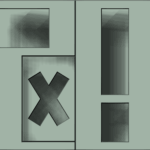
Luke (Aries) Harvey
Otis College of Art and Design
Professor: Hideyo Kameda
In a time where modularity and convenience in assembly is essential to relocation and exploration of new land (on earth or alien), this project goes beyond the needs for such while focusing on and relying on collaboration. 9 Core components, the ‘Core 9’, each serve an individual purpose (useful to beginning a community or civilization) but are destined to come together. These Core components’ function stays the same, but the details change in relation to the overall context of the site. They also change in relation to the different arrangements, pairing and collaboration with other shapes as they amplifying one another and create an area of overlap in functionality and outcome.
The Assembly of 9
This project was our first studio project at Otis College of Art and Design. For Studio 1, we were given 9 shapes, and we were given different tasks that introduced us to the essentials and basics of architectural drawing, physically and digitally. The project came to an end with us choosing 8 shapes that would form two floors of 2×2 shapes. We could chose a shape more than once if we rotated or mirrored it. We then went in to add circulation, openings and the interior and life of the project.
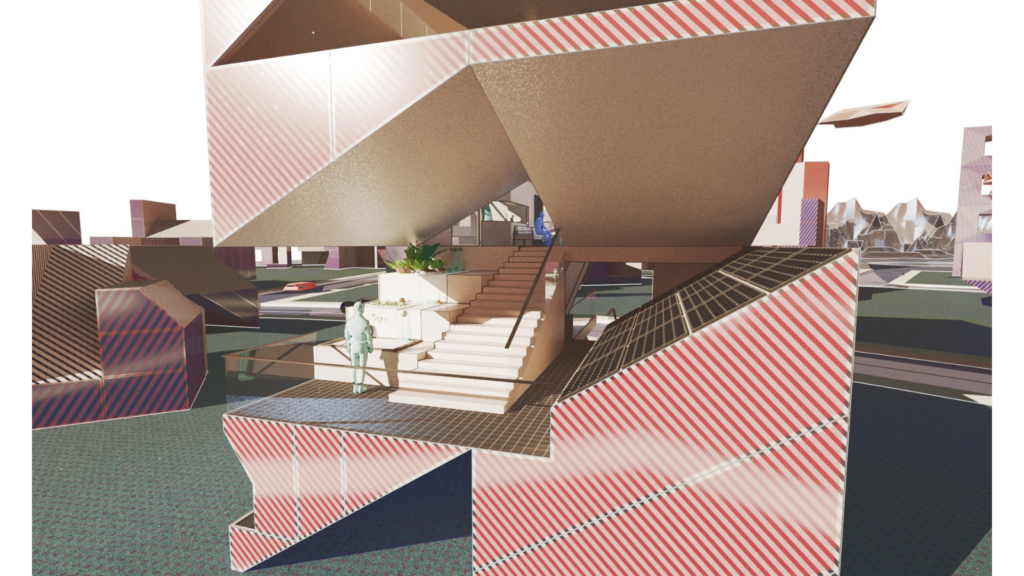
The project is centered around the theme of collaboration and has been since we began this project in studio. After further developing this project over the last year, I have come to give it context, an interior and exterior that match its context. I have also created a city/community that my main building exists in and around. The project has now come to be known as ‘The Assembly of 9.’
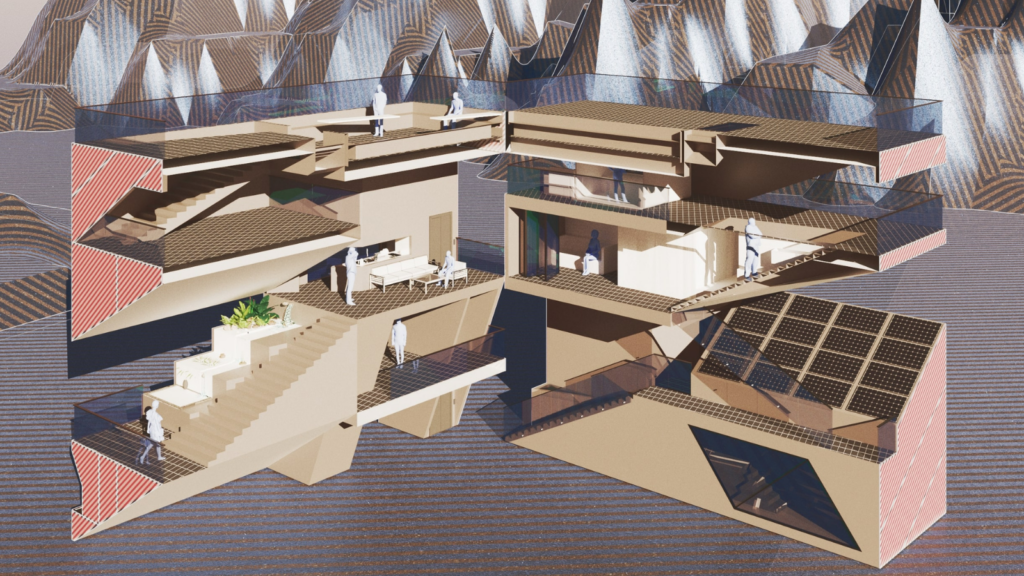
‘The Assembly of 9’ is a research + living facility on an extraterrestrial planet, using distinct forms combined together to create horizontal and vertical collaborative spaces. Collaboration is the act of working together with someone or something to produce or create. It is more than simple cooperation; it forms a bridge between collaborators and innovation. This project centers on nine core components, each with its unique function, serving as building blocks for exploration of new lands, whether on untouched Earth or, as in this case, Mars. For instance, Core 1 functions as a residential space, while Core 5 serves as a collaborative hub for social and cultural exchange.
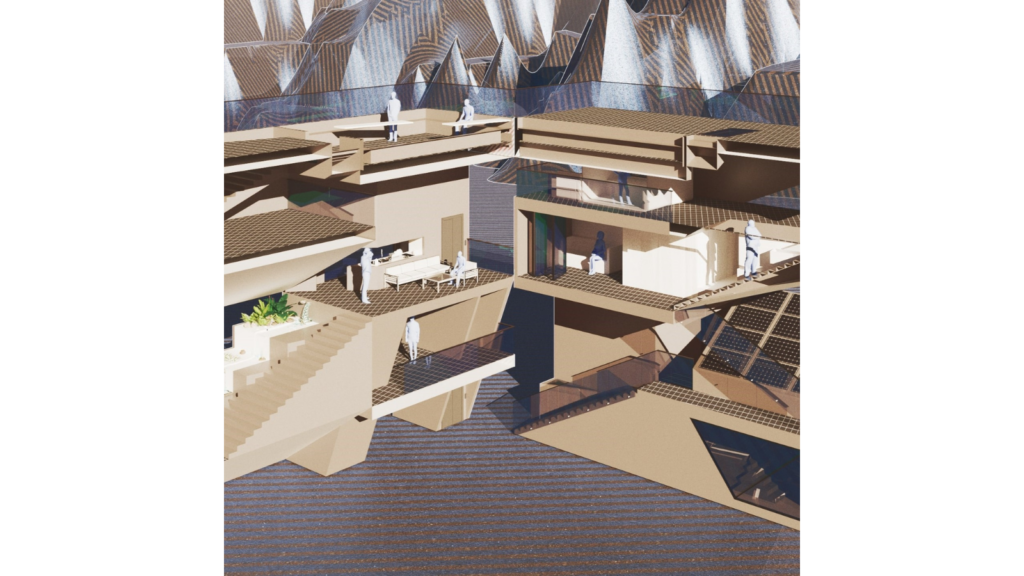
These components, the ‘Core 9,’ overlap in functionality as they work together. In the large contextual render above, Core 8 and Core 5 merge to create a space for transportation and social interaction. The arrangement of the ‘Core 9’ offers endless possibilities, influenced by the context of the building, which can determine the facilities, fixtures, and configurations of each core’s shape. For example, Core 4 (the agricultural space) may function independently as a farm, be configured in multiple Core 4 units, or serve as an indoor or vertical garden within a residential space, as is the case in this project’s focus. In the chosen building for this project, each Core serves its purpose but tailored to a residential space.
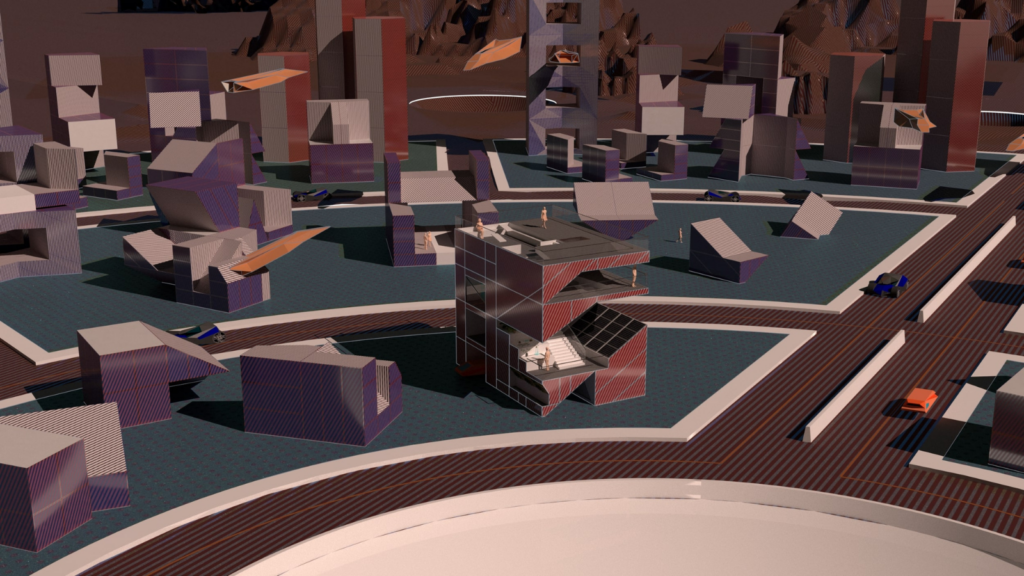
These Cores also create an overlap. For example, Core 8 (which is a transportation block) is adjacent to the entrance and Core 4, therefore, allowing it to be an ideal entry point whether it be on ground or into the first elevated level of the building via transportation that can fly or is built into this level. This Core 8 block can also act as a transportation block for the agricultural produce from the adjacent Core 4 block. Furthermore, since the circulation route moves from Core 4 to the second Core 5 (an interactive space), this collaboration creates an overlap between agriculture and social and cultural engagement. For example, a space such as a restaurant could cater for this space. However, since it is in a residential space, a kitchen is a perfect product from the collaboration of agriculture and social engagement.
The ‘Core 9’ exemplify collaborative excellence, acting as a system that promotes the establishment of new civilizations and communities that thrive on collaboration. This project further highlights collaboration by using a mix of media, presenting drawings and renderings of the Core 9 in a graphic, stylised form reminiscent of cartoons or animations rather than traditional realistic renders. The creation of this project required collaboration across various artistic disciplines.
